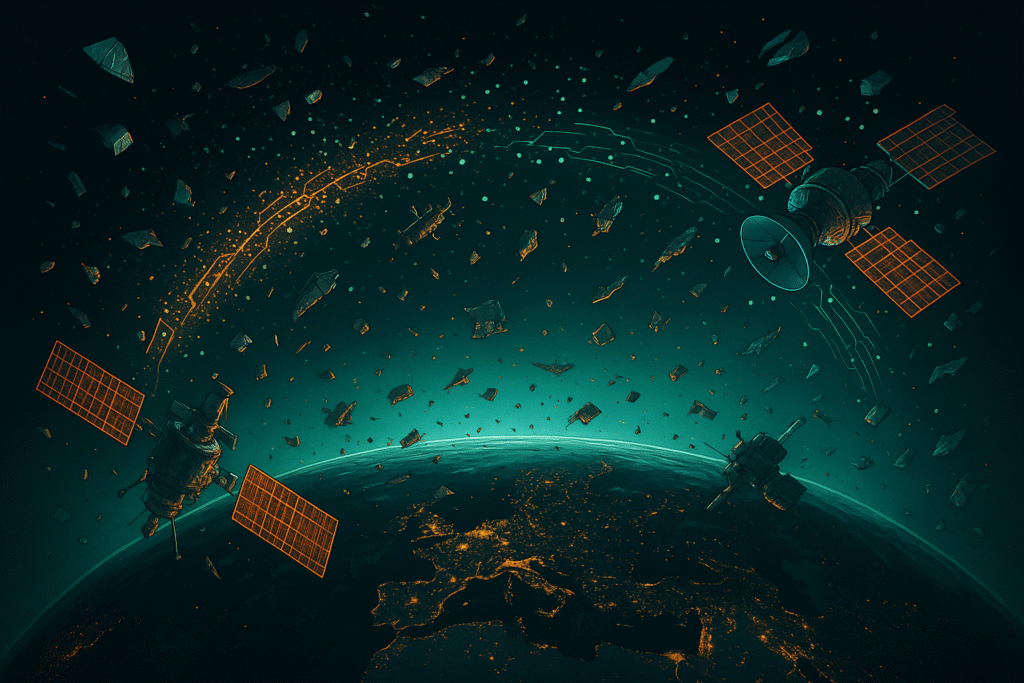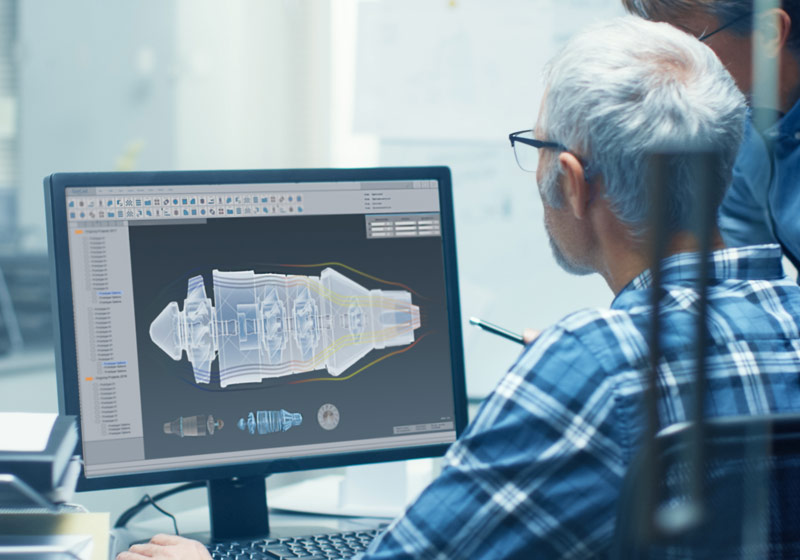Introduction
Earth’s orbit is becoming dangerously crowded. Over 34,000 objects larger than 10 cm are tracked today — and an estimated 130 million smaller fragments silently threaten satellites, space stations, and launch vehicles. As space commerce accelerates, collision prediction and debris management have become mission-critical.
Artificial Intelligence (AI) and custom Large Language Models (LLMs) are transforming how the aerospace and defense industries monitor, predict, and mitigate orbital risks — turning data overload into real-time intelligence.
The Growing Space Debris Challenge
An Overcrowded Orbit
The “Kessler Syndrome” — a self-sustaining chain reaction of debris collisions — is no longer theory. Events like the Russian ASAT test (2021), Starlink mega-constellation expansion, and record satellite launches have intensified orbital congestion.
Current tracking networks such as the Space Surveillance Network (SSN) detect large objects, but millions of smaller fragments remain invisible — each capable of catastrophic damage.
Limits of Traditional Surveillance
Existing radar and optical systems struggle to keep pace with the data surge. Analysts face:
- Hours or days of processing delay
- Up to 30% false alerts
- Limited predictive accuracy due to static physics models
In a sky that’s constantly changing, static systems aren’t enough.
How AI Redefines Space Situational Awareness
- Smarter Detection and Classification
Machine learning models process multi-sensor inputs from radar, optics, and satellites simultaneously. They identify whether an object is:
- Active or defunct
- Natural or man-made
- Fragmented or intact
By fusing these data streams, AI creates a unified debris catalog that updates in real time — enabling faster, more accurate decisions.
- Natural Language Access with Custom LLMs
LLMs bring clarity to complexity. Instead of coding queries, analysts can ask:
“Show me all objects within 500 km of Starlink satellites with a 1×10⁻⁴ collision probability.”
Custom LLMs transform orbital mechanics into plain-language insights, automatically generating reports, summaries, and multilingual briefs for global collaboration.
- Predictive Intelligence and Real-Time Decision Support
AI models refine predictions using live atmospheric, solar, and orbital data — improving collision probability accuracy by 40%. They detect debris movement trends weeks ahead, giving operators valuable reaction time.
Integrating AI into Space Operations
Data Pipeline for AI-Driven SSA
Real-time debris management relies on multi-source data fusion — radar, optics, and atmospheric inputs processed via cloud-based ML pipelines and LLM interfaces.
This structure allows for continuous catalog updates and instant access across defense and commercial platforms.
Security, Compliance & Global Standards
AI systems in space defense operate under ITAR/EAR regulations, ensuring restricted technology control.
Encryption, access governance, and audit trails maintain data integrity across international partnerships.
Real-World Applications
Constellation Collision Avoidance
Operators like SpaceX and OneWeb manage thousands of satellites. AI-driven LLMs:
- Predict conjunctions 7–14 days earlier
- Recommend optimal maneuvers
- Generate automated mission and compliance reports
Crew and Station Safety
For missions like the ISS, AI can predict debris threats beyond the standard 3-day window — giving astronauts time to plan and reposition.
Launch Safety and Risk Management
AI models analyze debris flux and trajectory patterns to identify safe launch windows and optimize range safety operations.
Strategic and Operational Impact
Performance Advantages
- 60–80% reduction in analyst workload
- 40–60% fewer false alerts
- Sub-minute processing for critical debris events
International Collaboration
Custom LLMs bridge language and technical barriers, standardizing debris tracking across agencies and nations — supporting global sustainability in orbit.
The Future of AI in Space Defense
Just as radar revolutionized air defense, AI will define the next era of space safety.
Custom LLMs democratize access to orbital intelligence — enabling faster coordination, smarter maneuvering, and safer missions.
For government and commercial operators alike, integrating AI into space situational awareness isn’t optional — it’s essential for protecting the orbital commons.



